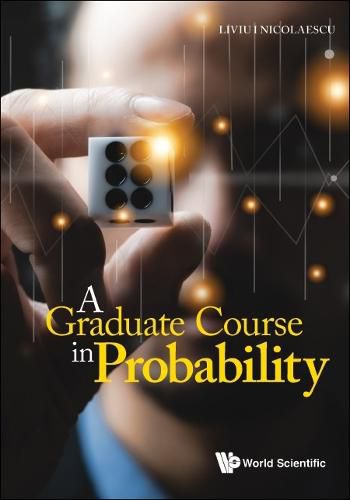Readings Newsletter
Become a Readings Member to make your shopping experience even easier.
Sign in or sign up for free!
You’re not far away from qualifying for FREE standard shipping within Australia
You’ve qualified for FREE standard shipping within Australia
The cart is loading…






This title is printed to order. This book may have been self-published. If so, we cannot guarantee the quality of the content. In the main most books will have gone through the editing process however some may not. We therefore suggest that you be aware of this before ordering this book. If in doubt check either the author or publisher’s details as we are unable to accept any returns unless they are faulty. Please contact us if you have any questions.
This book grew out of the notes for a one-semester basic graduate course in probability. As the title suggests, it is meant to be an introduction to probability and could serve as textbook for a year long text for a basic graduate course. It assumes some familiarity with measure theory and integration so in this book we emphasize only those aspects of measure theory that have special probabilistic uses.The book covers the topics that are part of the culture of an aspiring probabilist and it is guided by the author’s personal belief that probability was and is a theory driven by examples. The examples form the main attraction of this subject. For this reason, a large book is devoted to an eclectic collection of examples, from classical to modern, from mainstream to ‘exotic’. The text is complemented by nearly 200 exercises, quite a few nontrivial, but all meant to enhance comprehension and enlarge the reader’s horizons.While teaching probability both at undergraduate and graduate level the author discovered the revealing power of simulations. For this reason, the book contains a veiled invitation to the reader to familiarize with the programing language R. In the appendix, there are a few of the most frequently used operations and the text is sprinkled with (less than optimal) R codes. Nowadays one can do on a laptop simulations and computations we could only dream as an undergraduate in the past. This is a book written by a probability outsider. That brings along a bit of freshness together with certain ‘naiveties’.
$9.00 standard shipping within Australia
FREE standard shipping within Australia for orders over $100.00
Express & International shipping calculated at checkout
This title is printed to order. This book may have been self-published. If so, we cannot guarantee the quality of the content. In the main most books will have gone through the editing process however some may not. We therefore suggest that you be aware of this before ordering this book. If in doubt check either the author or publisher’s details as we are unable to accept any returns unless they are faulty. Please contact us if you have any questions.
This book grew out of the notes for a one-semester basic graduate course in probability. As the title suggests, it is meant to be an introduction to probability and could serve as textbook for a year long text for a basic graduate course. It assumes some familiarity with measure theory and integration so in this book we emphasize only those aspects of measure theory that have special probabilistic uses.The book covers the topics that are part of the culture of an aspiring probabilist and it is guided by the author’s personal belief that probability was and is a theory driven by examples. The examples form the main attraction of this subject. For this reason, a large book is devoted to an eclectic collection of examples, from classical to modern, from mainstream to ‘exotic’. The text is complemented by nearly 200 exercises, quite a few nontrivial, but all meant to enhance comprehension and enlarge the reader’s horizons.While teaching probability both at undergraduate and graduate level the author discovered the revealing power of simulations. For this reason, the book contains a veiled invitation to the reader to familiarize with the programing language R. In the appendix, there are a few of the most frequently used operations and the text is sprinkled with (less than optimal) R codes. Nowadays one can do on a laptop simulations and computations we could only dream as an undergraduate in the past. This is a book written by a probability outsider. That brings along a bit of freshness together with certain ‘naiveties’.